The CAGED System with the Aeolian Mode
Now you have spent time playing with the Pentatonic scale in one position, it is time to extend this idea with the Aeolian mode. First of all, learn the 5 anchor chords around which we will visualise the Aeolian scale shapes:
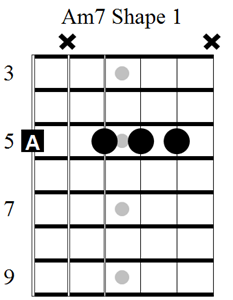
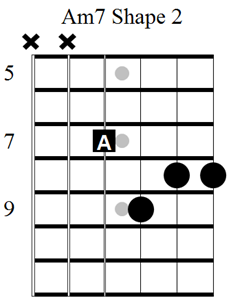
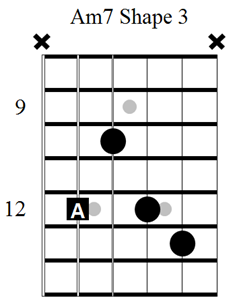
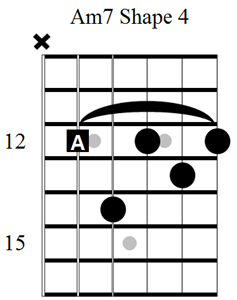
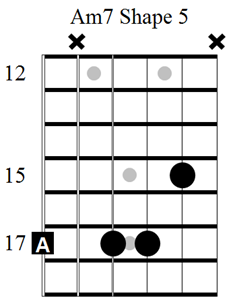
While simple minor chords (not minor 7ths) would work equally well for the Aeolian mode, we need to differentiate between the anchor chord for the Blues Scale and the one for the Aeolian mode.
Begin by learning the chords and then play exercise figure and audio example 12 b.
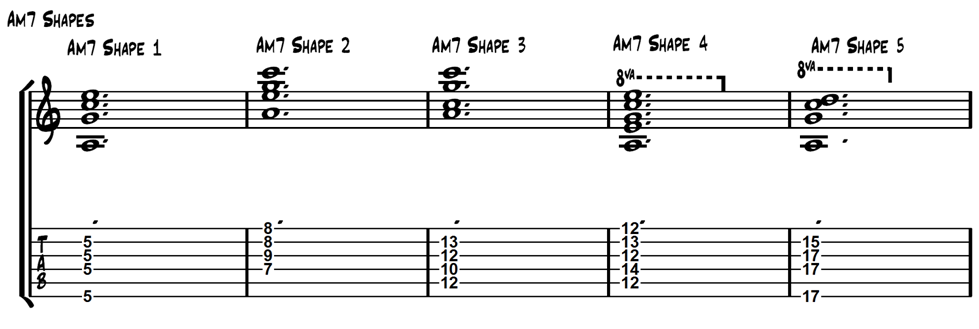
Test yourself by skipping shapes as shown in figure and audio example 12c. As you play each shape, remember to say its name and position out loud, e.g. “A minor 7 shape 1.”
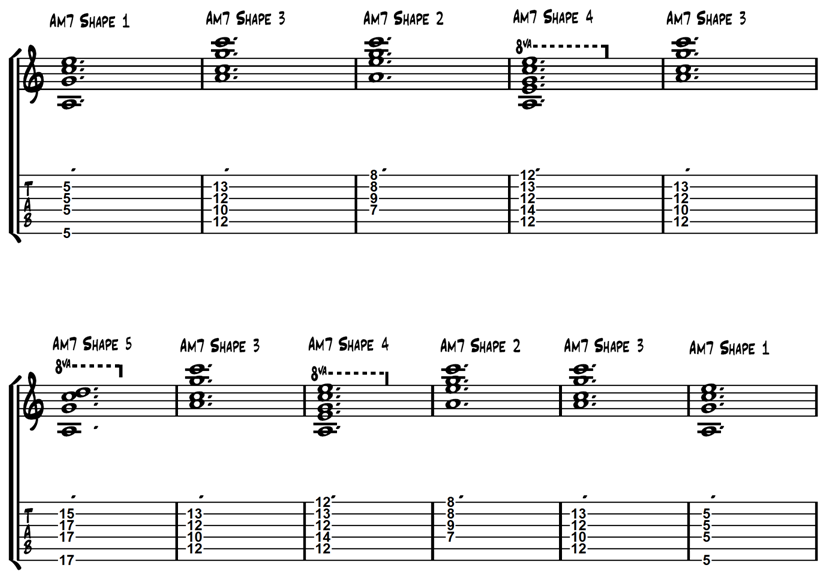
When you have memorised the 5 anchor chords, it is time to build each position of the Aeolian mode around each one.
Figure and audio example 12d:
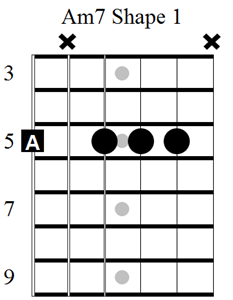
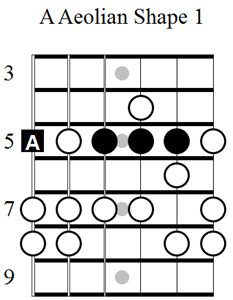

Figure and audio example 12e:
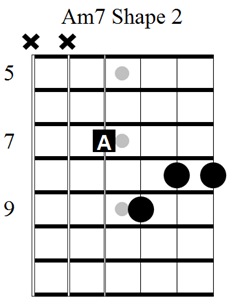
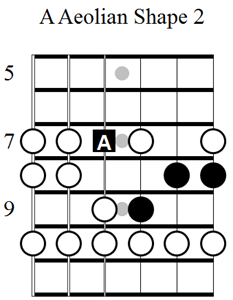

Figure and audio example 12f:
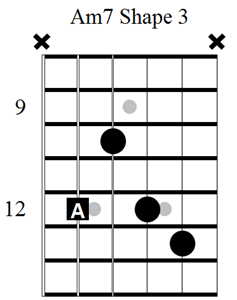
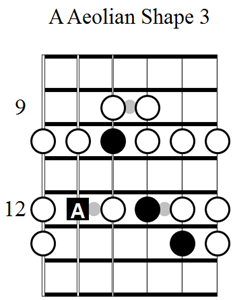

Figure and audio example 12g:
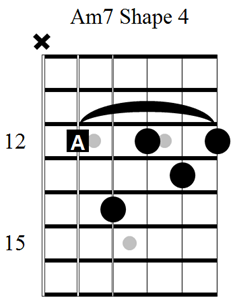
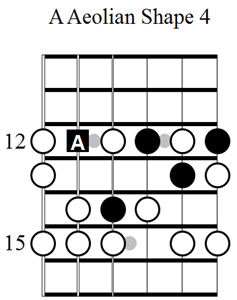

Figure and audio example 12h:
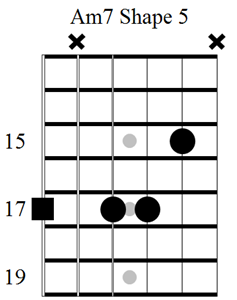
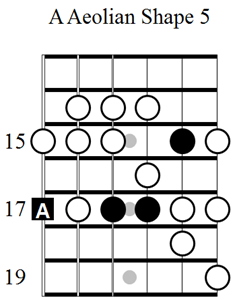

As you did with the Blues Scale, link up the shapes vertically along the neck in the following exercise:
Figure and audio example 12i:
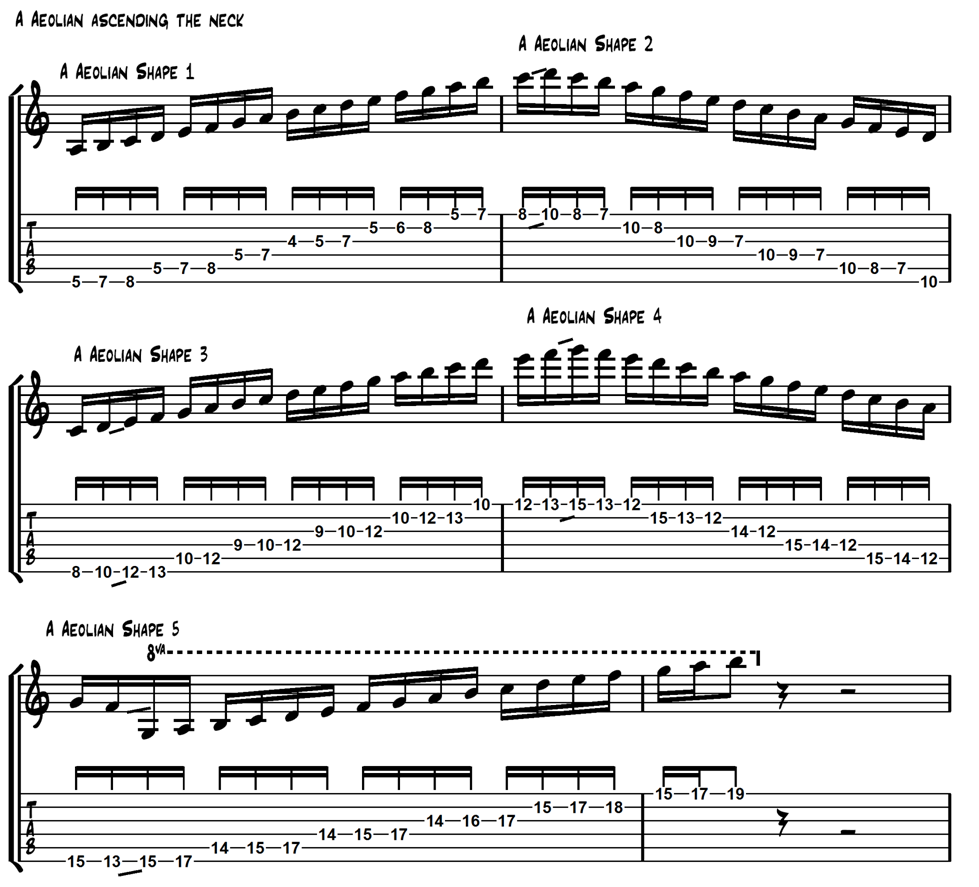
A lovely exercise to practice is to just let your fingers go for a walk on the neck and see how many different ways you can find to position-shift between any 2 scale positions of the Aeolian mode. Find the connections on all 6 strings and this will really open up the neck for you. Try it in different keys too.
Aeolian Mode Rock Licks in 5 Positions
As you start to get to grips with these shapes, it is time to start learning vocabulary based around each position.
The following chapters contain 25 Aeolian licks, 5 based around each scale shape. Listen to the audio examples first and spend time learning just your favourite lick from each shape. It is better to have one lick in each position than five licks in one position. Again, the idea is to attach each lick to the anchor chord you learned in the previous chapter; all you need to visualise is the first note of the lick superimposed over the anchor chord, and you will always know where to start that lick whatever key you’re playing in.
Try playing the anchor chord and then playing the lick you’re learning to cement in this relationship.
A very important thing to note is that the Aeolian mode is often freely combined with the Minor Pentatonic / blues Scale. This adds another level of depth to its tonality and makes it sound slightly more ‘rocky’. The following 25 licks reflect this and some of them include notes from the Blues Scale.
Aeolian Licks Shape 1
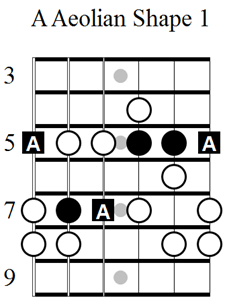
Figure and audio example 13a:

Figure and audio example 13b:

Figure and audio example 13c:

Figure and audio example 13d:

Figure and audio example 13e:

“The artists you work with, and the quality of your work speaks for itself.”
Tommy Emmanuel
© Copyright Fundamental Changes Ltd 2024
No.6 The Pound, Ampney Crucis, England, GL7 5SA

